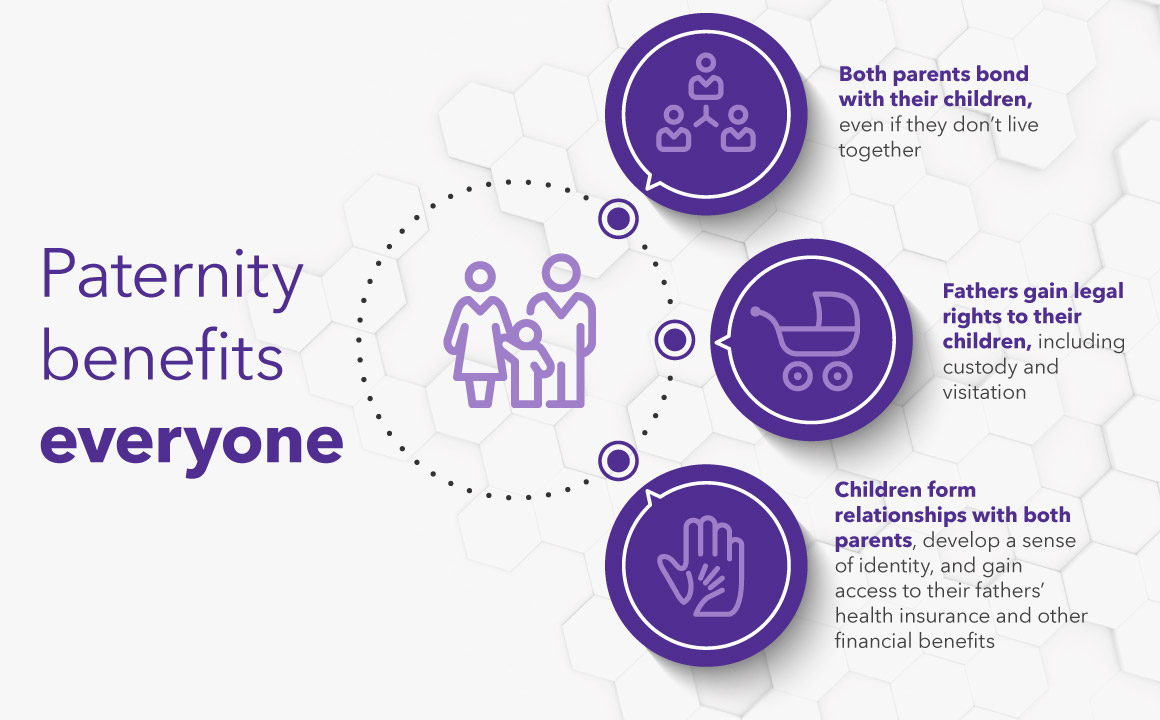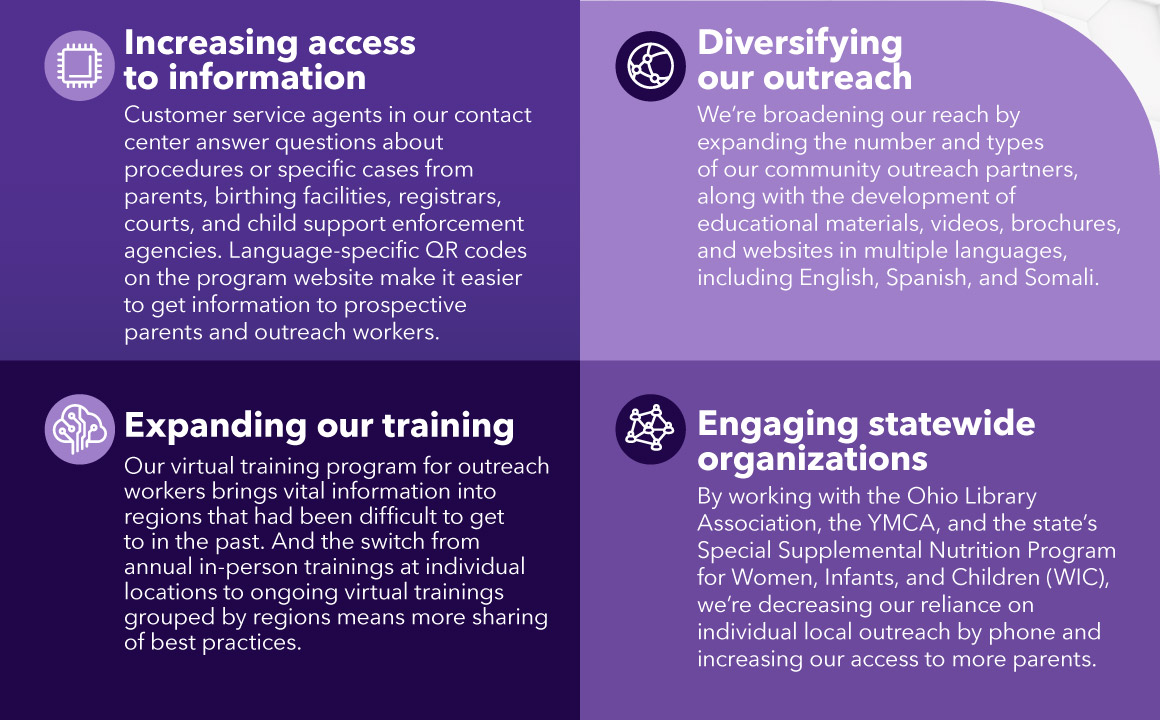Jennifer Butler remembers the day a concerned mother called the paternity hotline. Her 18-year-old son had been accepted to his dream college. Because his father was an alumnus, her son qualified for a scholarship. But she was worried that something she had failed to do years ago would now jeopardize her son’s future.
The school required a copy of the young man’s birth certificate, but his parents were not married and had never put his father’s name on it.
“My son worked so hard to get into his dream school and he’s not going to be able to go to college because of something his father and I didn’t do — because it didn’t seem important at the time,” Jennifer remembers the mother saying.
The mother had just days to get the father, with whom she had a good co-parenting relationship, to complete a paternity affidavit and obtain a new birth certificate listing both parents.
As the operations manager for the Ohio Central Paternity Registry, administered by Maximus, the concern Jennifer heard on the phone that day is not uncommon. She and her teammates often hear from parents who are in urgent situations, including those seeking child support, trying to get a child into school, and obtaining coverage from the noncustodial parent’s health insurance.
The importance of establishing paternity
In her experience, Jennifer has found that many unmarried young adults don’t understand the significance of formally establishing paternity “They think it doesn’t matter or that it’s too hard or time-consuming,” she explains. “However, you might not realize it’s important until you need it.”
In Ohio, more than 40% of children are born to unmarried parents — and an increasing number of these parents are choosing not to identify the father on the birth certificate. But skipping this simple step can have a significant impact on both parents’ and children’s rights.
Paternity establishment is one aspect of fatherhood, which plays a key role in sustaining strong families and healthy relationships. Even when they do not live in the same household, parents are partners in raising their children and fathers are important contributors to the wellbeing of their children. Studies suggest that children with involved, engaged fathers — even if they don’t reside in the same home — are more likely to achieve in school, have healthy self-esteem, exhibit empathy and other positive social behaviors, and avoid high-risk behaviors including drug use, missing school, and criminal activity.[1]
Paternity establishment also impacts the state’s ability to fund programs that support families in times of need. The federal government can withhold millions of dollars in TANF funds if the state’s paternity establishment rate falls below the federal minimum requirement of 90%.
Ohio wants to make certain parents understand the importance of establishing paternity — providing the rights and opportunities both parents and children need to grow and thrive.


